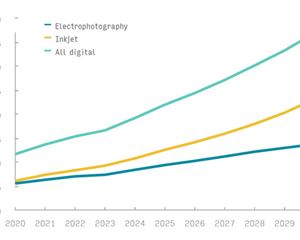With Bobst, Sawhney reduces manpower, increases productivity
Baddi-based Sawhney Paper Products has managed to save manpower and reduce production hours, while increasing the quality of final products since the installation of a BobstVisionfold 80 A2, folder-gluer a year ago.
08 Jul 2019 | By Rahul Kumar
Before investing in the Bobst, Sawhney was using four India-made folder-gluers to meet its production demands, running the production site for around 18 hours a day while deploying around 16 people on all four folder-gluers.
“Since we installed the Bobst folder gluer, all the four previous folder-gluers are now resting,” Rajiv Sahni, founder of Sawhney Paper Products, says. “We have also reduced our production hours from 18 to 12 and now only four to five people are required to run the folder-gluer. Thus, we save on all possible fronts — manpower, turnaround time, consumption of electricity, real estate and others.”
Sahni says this two-fold result of reduction in manpower and increase in productivity is due to Bobst’s automation and sturdiness. He says the speed of the machine is much higher compared to Indian made machine. Plus, the machine offers accuracy even at that speed.
“Definitely, when we can run the Bobst folder-gluer at five times more speed compared to the India-made, the job will be completed faster. Bobst can perform equivalent to four India-made machines more or less, depending on the job,” Sahni says.
Sawhney Paper Products is equipped with multiple multicolour Heidelberg printing presses along with essential machines in post-press. It converts around 1,500-tonnes of paper and board per annum in its 14,000-sqft production facility with a team of 80 people. Sahni says the packaging printing company is growing at 15 to 20%CAGR.
Sawhney Paper Products is dedicated to pharma industry, where most of the job packs are smaller and printed on thin paper and board.
Sahni says the company can run such jobs on the Bobst folder-gluer, and the since its installation a year back, the machine has helped increase the company’s productivity. This is primarily due to the speed of the machine.
“When we run the machine at 50,000 boxes an hour or more than that, it automatically converts jobs faster with accuracy and saves on production time. Thus, if we have to convert two-lakh boxes, we require only four hours of production. But in Indian folder-gluers, we cannot achieve such speed. So production will be slow and take more time,” Sahni explains.
Sawhney does lock-bottom, side-pasting and other possible cartons on the folder-gluer. Sahni says recently, the company ran a job a 90,000-cartons an hour speed and it was only possible because of the Bobst machine.
“It was a pharma box and we could convert it easily because we have the folder-gluer which can run at such speed. The Bobst folder-gluer always produces ready to dispatch boxes, no matter whatever is the job,” he says.
Thus, despite the initial investment cost, it is an investment Sahni is proud of, because as he explains, the benefit outweighs the cost. “If a machine is good, you can offset the investment cost. The same thing happened with us,” he adds.
Rajiv Sahni started Sawhney Paper Products in 1982. “During my study, I found printing and packaging to be an attractive option. I started with an envelope manufacturing unit. Gradually, we entered into carton board packaging and now produce carton boxes for pharma, spices and other industries,” he says.
Sahni is helped in the business by his father Amolak Ram Sahni, who is responsible for the overall business and his brothers, Pradip and Anil, who are responsible for accounts and production respectively. Recently, Sahni’s son Sahil joined the business after completing his bachelor degree in commerce and MBA from the UK, taking cares of marketing and business development.
Sahni’s advice for converters looking to invest in a Bobst folder-gluer? “Automation gives you the peace of mind and credibility, but always do your homework before investing because feeding such machines on regular basis can be a challenge for some converters,” he concludes.












 See All
See All